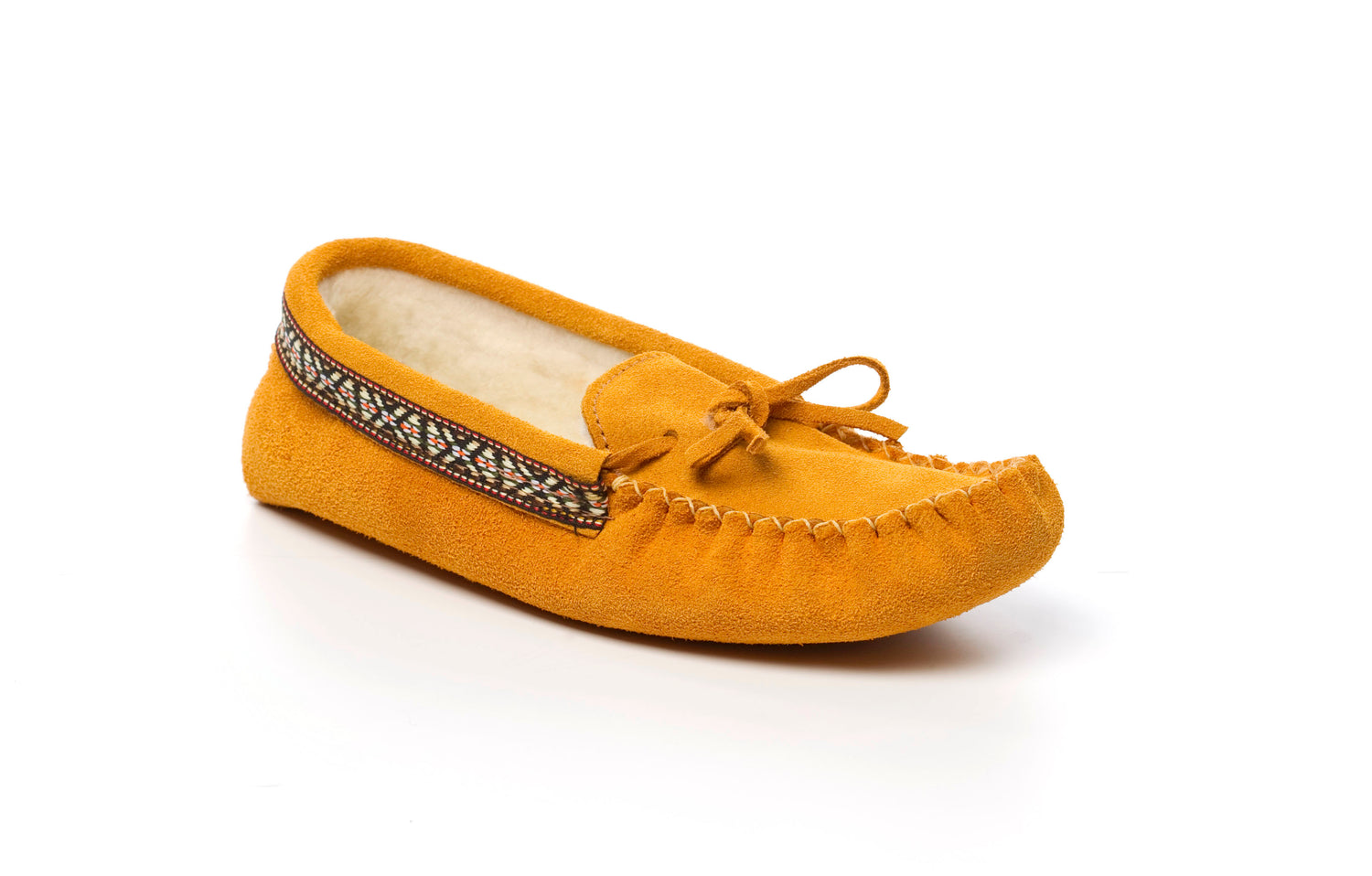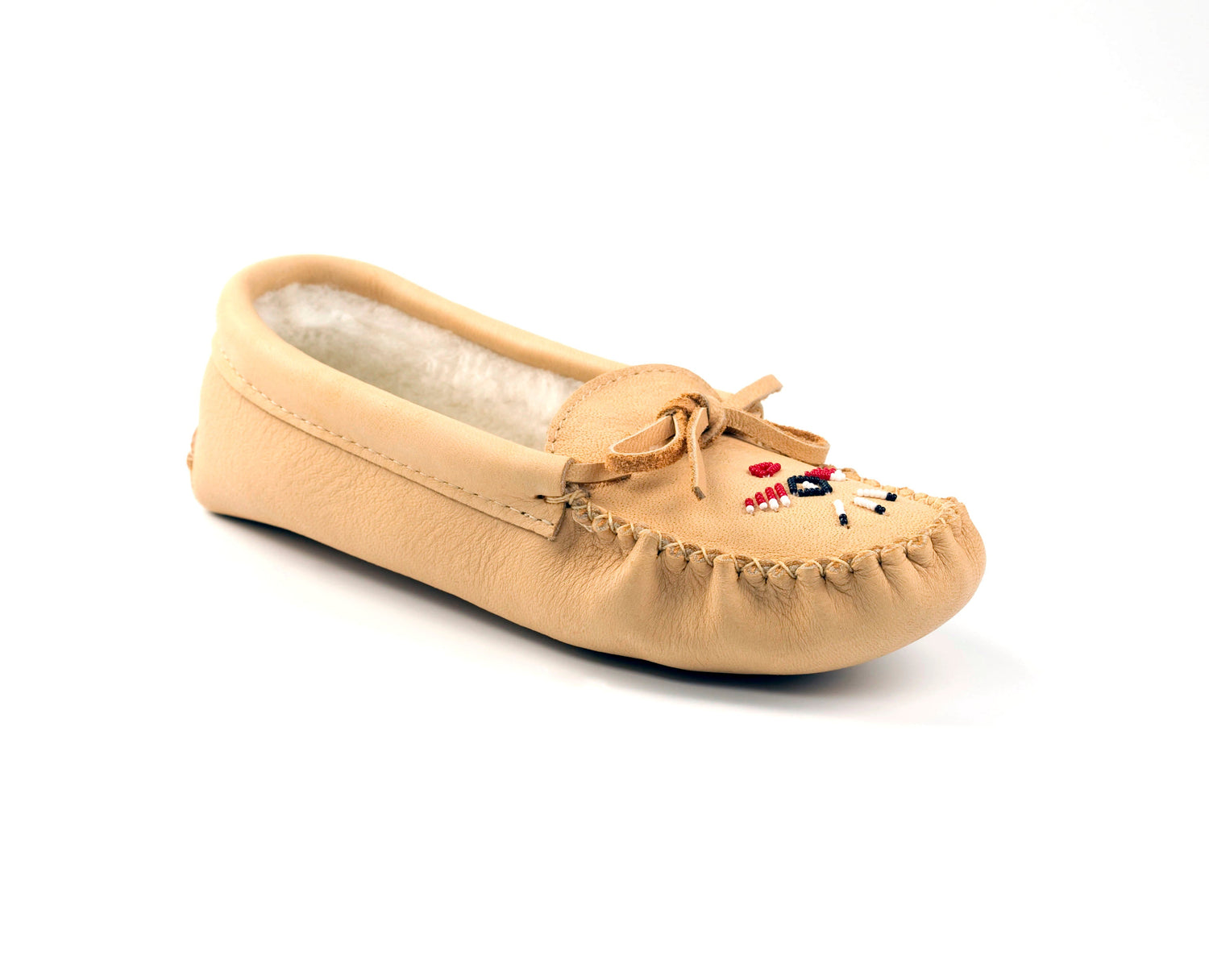
The Tale of Two Chiefs and the Moccasins of Peace: A Short Story
Share
The Tale of Two Chiefs and the Moccasins of Peace
Long ago, in a village nestled beside the flowing river, lived two strong and respected men, Makwa and Tala. Both were skilled hunters, wise speakers, and deeply loved by their people. When the time came to choose a new chief, both Makwa and Tala were considered worthy.
Makwa was known for his strength and decisive actions. He believed in leading with a firm hand, ensuring the tribe's safety and prosperity through his own power and wisdom. Tala, on the other hand, was known for his patience and his ability to listen. He sought to build consensus, valuing the wisdom of every member of the tribe, young and old.
As the time for the decision drew near, a rift began to form within the village. Some people favored Makwa's strength, believing it was what they needed to face the challenges ahead. Others supported Tala's inclusive approach, yearning for a leader who would unite them all.
One day, an elder of the tribe, a woman named Nokomis, spoke to both men. "My sons," she said, her voice filled with the wisdom of many winters, "the path to true leadership is not always the one most easily seen. A chief must have strength, yes, but also the ability to listen. He must be a voice for his people, not just over them."
Nokomis then presented each man with a pair of moccasins. To Makwa, she gave moccasins made of the strongest, most unyielding leather, adorned with beads that depicted symbols of power and dominance. To Tala, she gave moccasins crafted from the softest, most supple suede, decorated with beads that represented the interconnectedness of all living things, and the delicate balance of their ecosystem.
"Walk in these moccasins," Nokomis instructed them, "and let them guide your path."
Makwa, used to swift action, quickly slipped on his sturdy moccasins and strode confidently through the village. He felt powerful and ready to lead. Yet, he did not notice the small child who tripped in his path, nor did he hear the whispers of the wind or the concerns of the elders. His focus was only on the destination, on being first.
Tala, with his softer moccasins, took each step with care. The supple leather allowed him to feel the earth beneath his feet, connecting him to the land. He noticed the child who had fallen and helped him up, listening to his laughter. He paused to hear the wind rustling through the leaves, carrying the voices of the ancestors. He stopped to listen to the elders, hearing their concerns and their hopes.
As days turned into weeks, both men walked among their people. Makwa organized great hunts and made swift decisions, earning the respect of those who valued his strength. But Tala spent time with everyone, listening to their stories, their dreams, and their fears. He helped to resolve disputes, heal old wounds, and strengthen the bonds between families.
Eventually, the people gathered to choose their chief. Those who had favored Makwa saw that while his strength was valuable, his inability to listen and truly connect with his people created division. Those who had supported Tala recognized that his compassion and inclusiveness had brought the tribe closer together, making them stronger as a whole.
In the end, both Makwa and Tala addressed the people. Makwa spoke of his plans for the tribe, of his vision for a powerful and prosperous future. Tala spoke of the importance of unity, of listening to one another, and of honoring the traditions that had sustained them for generations. He spoke of how the soft moccasins had taught him to feel the earth, to connect with his people, and to hear the whispers of his ancestors.
The people, in their wisdom, chose Tala to be their chief. But they also recognized the value of Makwa's strength and appointed him as a leader of the warriors, ensuring that the tribe would be protected.
Tala led the tribe with a gentle hand and a listening heart. He often wore the soft suede moccasins, which reminded him of his connection to the people and the land. Makwa, humbled by the experience, learned to walk with more care, to listen more deeply, and to value the wisdom of others. He and Tala worked together, their strengths complementing each other, and the tribe flourished.
And from that day forward, the moccasin became a symbol within the tribe, representing the balance between strength and gentleness, between action and listening, between individual will and the collective good. They were a reminder that true unity and peace could only be achieved when people walked together, with understanding and respect.
Moral of the Story for Today:
This story reminds us today that true leadership, and indeed true community, requires a balance of different qualities.
-
We need strength and determination to face challenges, but we also need compassion and empathy to understand and connect with one another.
-
We need to be able to act decisively, but we also need to listen to all voices, especially those who are often marginalized or overlooked.
-
We need to honor our traditions and heritage, but we also need to be open to new ideas and ways of doing things.
Like the moccasins in the story, we must strive to walk in a way that allows us to feel the earth beneath our feet, to connect with our fellow human beings, and to hear the whispers of wisdom that surround us. Only then can we create a world where we can truly walk together in peace and harmony.



